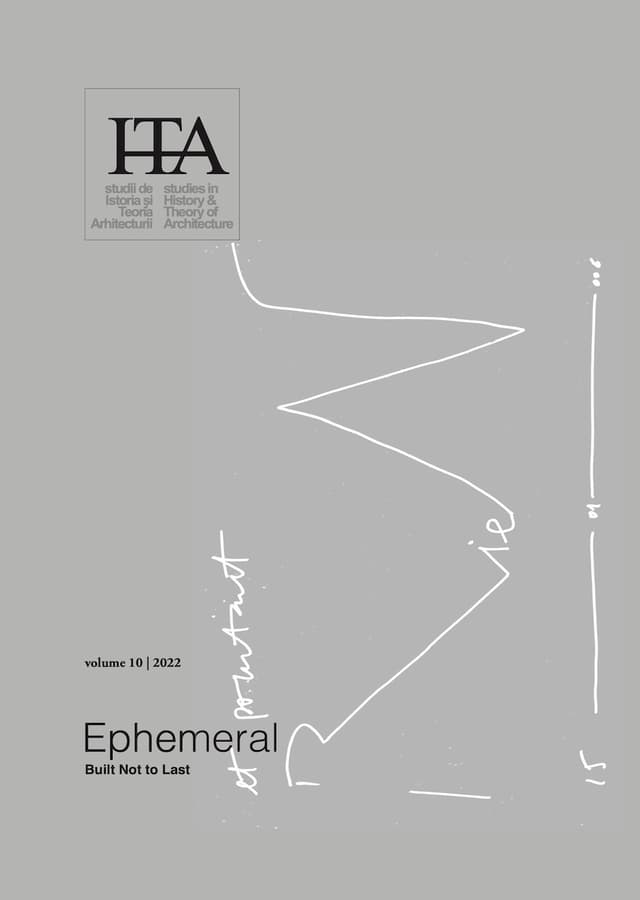Fleeting Moments, Floating Monuments.Ritual Machines of Performativity:Reading Ptolemy Philadelphus and Aldo Rossi
Fleeting Moments, Floating Monuments.
Ritual Machines of Performativity:
Reading Ptolemy Philadelphus and Aldo Rossi
by
Celia Ghyka
&
Cătălin Pavel
Keywords
Ptolemy Philadelphus
Aldo Rossi
floating pavilions
triumphal architecture
theatrical dimension of architecture
Venice
Alexandria
We probe into the arcanes of ephemeral architecture by juxtaposing two case studies whose similarities are striking and whose differences are no less informative. One is the temporary pavilion built by Ptolemy Philadelphus in his Egyptian capital in 275/274 BCE, for the banquet at the end of his Grand Procession – arguably the most lavish and eccentric pageant in all antiquity. The other is Aldo Rossi’s iconic building, the floating Teatro del Mondo, designed for the 1979-1980 Venice Biennale and dismantled after being tugged along the Adriatic Sea to Dubrovnik and back.
We argue that the strength and potential of these equally short-lived structures rely on and at the same time elevate the performative and theatrical dimension of architecture: Rossi’s building by definition, while Ptolemy’s pavilion was tantamount to a secular temple to Dionysus, god of the theater, decorated with statues of characters in tragedies and comedies, and in the center of which the king was on display during a triumphal symposion.
In both cases, the ephemeral character of the building allows for aesthetic, respectively ideological experiments otherwise rather tricky. One caters more easily to the needs of a multifarious public (Graeco-Macedonian, Egyptian, Persian clues abound in the description of Ptolemy’s pavilion), while Rossi’s theater elegantly blends a subtle array of heterogeneous influences (from the Anatomical theater of the Renaissance to lighthouse architecture, Elizabethan theatres and floating Venitian carnival structures). They are also each an itinerant center of the world which either receives a procession charting Alexandrian urban benchmarks, or reenacts the network of former Venetian colonies.
The pavilion as a spatial type in Antiquity is itself part of an architectural continuum that includes a number of floating Nile palaces, i.e. Ptolemies’ ceremonial ships, boasting gardens etc., while Rossi’s experiment becomes an iconic image of the Venice biennale and simultaneously a metaphor for the world itself. To sum up, these Hellenistic and NeoRationalist monuments share elements of floating (and fleeting) architecture that include ritualized events, performativity, and the oneiric, all of which would have been moot points, or plainly lost, if translated into permanent structures.
Published in

Chicago citation style
DOI:
10.54508/sITA.10.08
1 / 2013
Around a Fortunate Series of Publications and Events3 / 2015
Urbanity and Civil Society. The Rise of a New Urban Generation in Bucharest during the 2000s5 / 2017
Re-opening the Museum of Contemporary Art in Belgrade. Notes on Non-alignment and the Canonical6 / 2018
Reverse-engineering Political Architecture. The House of the People and Its Hidden Social Effects7 / 2019
A conversation with Stanislaus von Moos on the rooftop terrace of the Getty Research Institute8 / 2020
Beatriz Colomina. X-RAY Architecture10 / 2022
Fleeting Moments, Floating Monuments. Ritual Machines of Performativity: Reading Ptolemy Philadelphus and Aldo Rossi11 / 2023
Of Specters and Phantasms: an Introduction11 / 2023
Ruins That Speak: Ageing Bodies, Collapsing Cities. An interview with Salvatore Settis